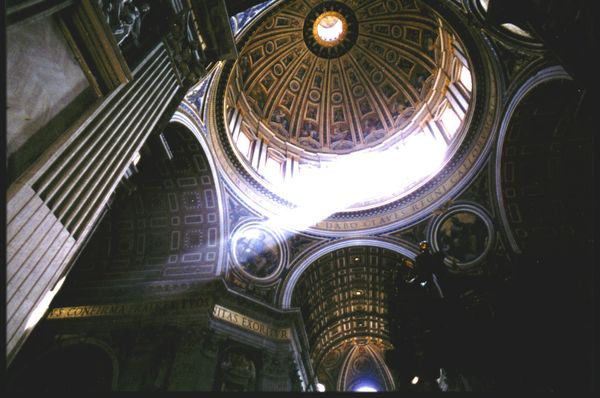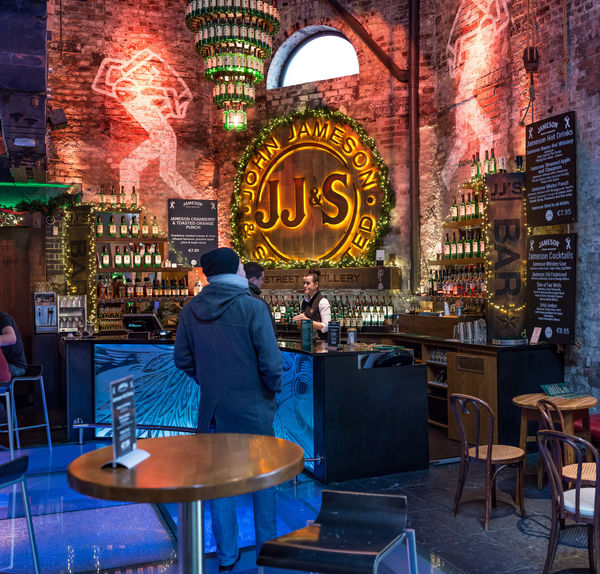Choice of wide-angle lens
Sep 23, 2017 13:50:50 #
dennyo wrote:
So sorry my question resulted in such a vitriolic dialog. Is that why this sight is called the UGLYhedgehog? I must say with all honesty ALL the information provided to me was helpful. BTW what does OP stand for?
OP means Original Poster, which in this case is your good self. There shouldn't have to be uglyness, but it seems to be part of our society unfortunately. Some people have very strongly held opinions. There have been some very informative things posted, whether about using panoramic approaches or using wide angle lenses. Both approaches are valid, and both take some skill and practice.
Personally I always travel with an ultra wide (10 -22 for APS-C) and a fish eye lens. I am not at all averse to Gene's approach of panos, but don't have the time to learn the technique at this point in time.
This is a very poor quality scanned reproduction, but I was very happy to have a 20mm ultra wide for my T90 when I went to San Pietro.

Sep 23, 2017 16:09:33 #
Peterff wrote:
OP means Original Poster, which in this case is yo... (show quote)
Now this shot does evoke some creativity and sense of life by use of the light. Great shot.
PS my example was with an Instamatic camera in SA and I was lucky to have it as it got confiscated later because I had it on an assignment.
Sep 23, 2017 17:28:09 #
OP - Original Post, used interchangeably for the author and the content of the post that started the discussion thread.
Sep 23, 2017 17:41:47 #
dennyo wrote:
So sorry my question resulted in such a vitriolic dialog. Is that why this sight is called the UGLYhedgehog? I must say with all honesty ALL the information provided to me was helpful. BTW what does OP stand for?
OP = Original Post(er)
Sep 23, 2017 23:39:45 #
I prefer a wide angle lens because I can see when I take the picture what I'm getting. I guess my imagination cannot handle figuring out in advance what pano stitching will result in.
Sep 25, 2017 06:51:37 #
rehess wrote:
I prefer a wide angle lens because I can see when I take the picture what I'm getting. I guess my imagination cannot handle figuring out in advance what pano stitching will result in.
The problem is, at least to my eye, ultra wide lenses, while "getting it all in" rarely provide a result that represents what I am getting.
I often draw a parallel with the 19 century landscape masters, especially in the Hudson River School of painting. Not a single one, especially the wider view landscapes, look like they were using an ultra-wide perspective. In order to "take in" a wider view they turned their heads. They only had their "normal focal length" eyes to view the world and that was their perspective. Ultra-wides are nice every once in a while in landscape use when you want to exaggerate a foreground element, like below. But I think that they are used far too often. Most of the time I end up with smaller images, partly because of keystone correction and partly because of having too much sky and foreground.
Using a longer lens gives me the correct "perspective" - rendering foreground and background elements appropriately sized relative to each other, but often too narrow a view. So, I turn my camera to take in more width (and on occasion height) to "take it all in" as a saw it.
Sep 25, 2017 08:23:50 #
Gene51 wrote:
The problem is, at least to my eye, ultra wide len... (show quote)
Actually you are convincing me to try doing some stitching in the future and even doing it following a trip. If I can get more detail and refinement in the final product, why not! Stitching, I think, would allow me to use a better prime lens of greater length, at least for interiors and large landscapes. I would still like something wider for street shots, since people my not stay in position long enough for me to get multiple shots to stitch.
Sep 25, 2017 10:21:17 #
Gene51 wrote:
If you are not familiar with pano stitching, espec... (show quote)
You really do a great job on your pano stitching. I don't think I would do as well. But one thing did make me laugh a little. Your second shot with the man standing in front of the table is missing the lower half of his right leg. :D
Sep 25, 2017 11:04:27 #
Japakomom wrote:
You really do a great job on your pano stitching. I don't think I would do as well. But one thing did make me laugh a little. Your second shot with the man standing in front of the table is missing the lower half of his right leg. :D
Wow! Good catch! I must have looked at this image dozens of times and never saw that. You certainly have a career as a Creative Director in a high-end advertising firm.
Here is the young lad two years later after his limb was reattached!
As far as any difficulty involved in on-the-fly hand-held panos - it really doesn't matter if the camera is level or not. What does matter is that there is enough overlap for the stitching program to find and blend boundaries. What got me on this shot was the barkeep's expression, and frankly it was my first shot. I decided that a wider view would put a bit more context into it so I took two more shots and stitched them.
Sep 25, 2017 11:23:44 #
Gene51 wrote:
Wow! Good catch! I must have looked at this image ... (show quote)
HaHa! I didn't notice until I zoomed in and was trying to see if I could could see the stitch lines. Couldn't see the lines but noticed the leg. :)
Do you use Photoshop or another program? I think I would like to try my hand at it.
Sep 25, 2017 12:04:50 #
Japakomom wrote:
HaHa! I didn't notice until I zoomed in and was trying to see if I could could see the stitch lines. Couldn't see the lines but noticed the leg. :)
Do you use Photoshop or another program? I think I would like to try my hand at it.
Do you use Photoshop or another program? I think I would like to try my hand at it.
I used Lr to stitch (but could have used PS), and used PS for the surgery. You will not see stitch lines, but you may find some legs have gone missing.
It's really easy. Point. Snap. Move and point. Snap. and so on. Camera needs to be on manual exposure and focus. For metering you find the part of the "pano to be" that has the brightest highlight and adjust your exposure to not blow it out. This will help when you blend the images later. If you use a lens that has considerable corner drop off (not vignetting), you may want to tag the image with the correct lens profile before merging.
Sep 25, 2017 12:19:31 #
Sep 25, 2017 14:07:28 #
Gene51 wrote:
The problem is, at least to my eye, ultra wide len... (show quote)
I think this has gone a little beyond the OP's initial question, but is a fascinating discussion about human perception, mapping how the eye and the brain view and record visual impressions, and how to replicate that with photography. It isn't merely about lenses, nor about techniques such as pano. They are all equally valid, but at least in my personal opinion all take some effort and practice to achieve the kind of results that makes the viewer say 'Wow!'
Isn't that what the essence of the photographer's art is about?
Sep 25, 2017 14:52:08 #
jdubu
Loc: San Jose, CA
Peterff wrote:
I think this has gone a little beyond the OP's ini... (show quote)
In 2005, my family went to China for an extended visit. I knew next to nothing about panoramas at that time, but read a little about technique and basics of overlapping. I still made mistakes, but PS made it possible to save me from myself. Shoot in manual, overlap and you're good to go. With the power of software now, stitching panos is a no brainer.
The first photo is a merge of 10 shots, I asked my cousin's friend to stand in that spot so I could record him consistently for scale while other tourists came and went. I believe he was in 2 or 3 photos. 2nd pano was 5 out of 7 shots in quick succession to show buildings, grounds and people in scale. 3rd is one of my mistakes not shooting in manual, but PS (in whatever version was current 12 years ago) saved it pretty well (4th).
My point is, with a normal 50mm lens, you can get wide angle photos without the distortion that is a pain to fix in PP.
Nowadays, I take a tilt shift lens and tripod for this purpose but, when there isn't time to set up, still shoot panos handheld. But these were shot handheld and as you can see, I was not even paying attention to shooting level.




If you want to reply, then register here. Registration is free and your account is created instantly, so you can post right away.









